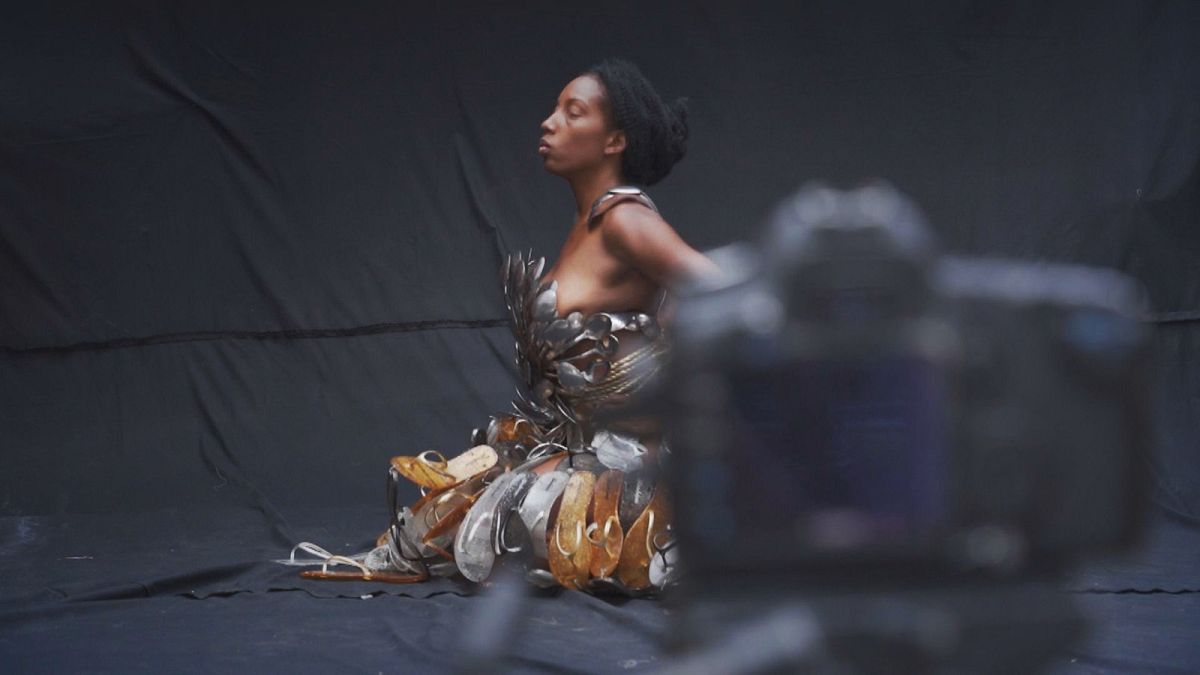A new generation of contemporary artists from the continent has now become an integral part of the global art scene, and a new generation of artists and gallery owners is growing-up in South Africa, Uganda and Angola.
When anyone thought about African art, it meant woodcuts, masks, and ethnic paintings but 'Contemporary African art' is becoming popular. It's a one-dimensional collective term for more than 50 countries, more than one billion people, tens of thousands of ethnic groups, more than 2000 languages, and dozens of religions.
Africa itself is the second largest continent, and its extensive art world is still a vast space of discovery and development.
"MELTING POT OF IDEAS"
Paula Nascimento is part of the international art scene and she curated the Angolan Pavilion, which won gold at the Venice Biennale. She knows the Angolan art scene very well.
"It’s a young and vibrant scene, you have painters, photographers, video artists you have all sorts of Media. Performance. It's a melting pot of ideas," she told Euronews.
AFRICAN ART SCENE UNDERESTIMATED
For a long time, the African art scene has been underestimated as contemporary African art is still underrepresented worldwide. A new generation of contemporary artists from the continent has now become an integral part of the global art scene, and a new generation of artists and gallery owners is growing-up in South Africa, Uganda, and Angola.
One of Angola's most famous artists, a pioneer in contemporary art, is preparing a 50 years’ retrospective - Antonio Ole. In the middle of the '70s, Angola became independent. Colonialism was the theme of all the young African artists all over the continent.
"We are pretty much linked to the idea of oppression in the past, because the colonialism, you know, provoke cultural retention. And it was a long process to restore these identities," he said.
History is not forgotten and continues to be a theme in art. But Africa is also part of the globalized world and art from Africa is recognized as contemporary in content and form.
António Ole said, "For years nobody was interested in African art, but suddenly during the last decades, we are occupying this empty space, and we are more respected now than we were before."
African artists have been increasingly represented at the Venice Biennale and the Documenta in Kassel in recent years. Artists like António Ole from Angola are hotly courted on the international art market.
He added, "We Africans had an extremely rich culture and traditions. In the beginning, when I started, in a certain moment I decided that it was necessary to find my own identity. I understood that these traditions inspire me a lot. And it's clear that some of my paintings are African in the sense of it."
WORLD INFLUENCES
Today, Angolan artists live and work all over the world. This influences their work and at the same time changes the perception of Africa in the world. Conversely, artists come here to work at the place of their origin.
Ayana V Jackson is an American photographer and artist in residence at Luanda. She's become known for her works on African-American identity.
"We're mentally stuck in the idea of Africa as traditional, mentally stuck in Africa as the past, especially with arts right. It wasn't until I went there that I realized that you know, it's in the same web of globalization as anywhere else in the world."
She has lived and worked in all African art hotspots. For her, Luanda is one of the main African art cities.
"I wanted to discover really what was going on here. And I found that it was a very vibrant scene. Lots of artists. They're here, and they're amazing," she added.
Nascimento added, "It's a movement that is happening now. And I think that this movement that has been almost something of a trademark; the Art world is global and we are part of this."

